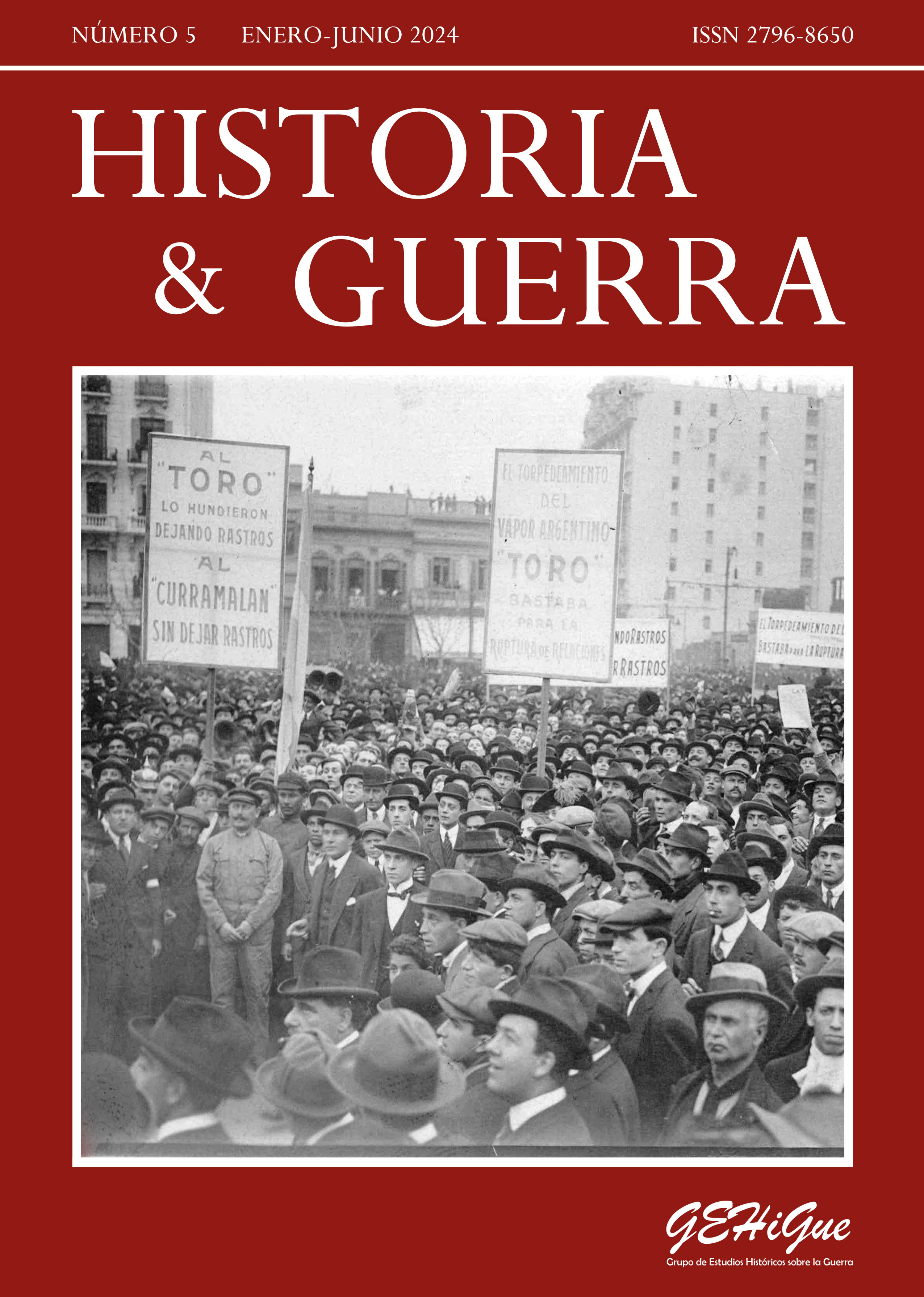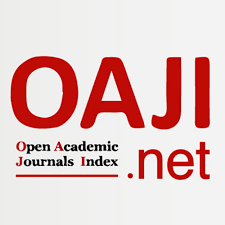Refugiados judíos polacos: huida y rescate a través de Japón, 1940-1941
Resumen
Con el fin de analizar la ruta de escape a través del Lejano Oriente que tuvo lugar entre mediados de 1940 y mediados de 1941, el trabajo examina la huida de los judíos polacos e indaga las emociones y la solidaridad que acompañaron los trayectos. Para ello, toma el caso de dos jóvenes oriundos de Kobryn (antes Polonia y hoy Bielorrusia), quienes, tras salir de Polonia a Lituania luego pasar a Rusia y finalmente a Japón, lograron embarcarse rumbo a la Argentina, el país de América Latina que recibió más refugiados judíos del nazismo. Además, explora las voces de quienes constituyeron un organismo clave de ayuda: el Comité de Asistencia a los Refugiados, conformado en la ciudad portuaria japonesa de Kobe.Descargas
Citas
Avni, H. (2003). La guerra y las posibilidades de rescate en A. Milgram (edit.), Entre la aceptación y el rechazo. América Latina y los refugiados judíos del nazismo (pp.13-36). Instituto Internacional de Investigación del Holocausto, Yad Vashem.
Eber, I. (edit.). (2018). Jewish Refugees in Shanghai, 1933-1947. A Selection of Documents, Archive of Jewish History and Culture, 3.
Edele, M., Fitzpatrick, S. y Grossmann, A. (2017). Introduction en M. Edele, S. Fitzpatrick y A. Grossmann (editors), Shelter from the Holocaust. Rethinking Jewish Survival in the Soviet Union (pp. 1-27). Wayne State University Press.
Edele, M y Warlik, W. (2017). Saved by Stalin? Trajectories and Numbers of Polish Jews in The Soviet Second World War en M. Edele, S. Fitzpatrick y A. Grossmann (editors), Shelter from the Holocaust. Rethinking Jewish Survival in the Soviet Union (pp. 95-131). Wayne State University Press.
Goldlust, J. A (2017). A different silence: The Survival of More than 200,000 Polish Jews in The Soviet Union during World War II as a case study in cultural Amnesia en M. Edele, S. Fitzpatrick y A. Grossmann (editors), Shelter from the Holocaust. Rethinking Jewish Survival in the Soviet Union (pp. 29-94). Wayne State University Press.
Jakubowicz, A. (2017). Transnationalism in the analysis of global refugee movements: the case of the Second World War Polish Jews in Shanghai. Australian Humanities Review.
Kalczewiak, M. (2019). We Hope to Find a Way Out from Our Unpleasant Situation: Polish-Jewish Refugees and the Escape from Nazi Europe to Latin America, American Jewish History, 103 (1), 25-49.
Kowner, R. (2023). A Holocaust paragon of Virtue´s rise to fame. The transnational commemoration of the Japanese diplomat Sugihara Chiune and its divergent national motives. The American Historical Review, 128 (1), 31-63.
McDonald, N. (2019). The Serene Skies of Kobe. Memproes of the Kobe Jewish Refugee Community, 1940-1941. East Asian Studies Journal, XLIII, 45-59.
Medzini, M. (2016). Under the shadow of the rising sun. Japan and the Jews during the Holocaust Era. Academic Studies Press.
Raber, A. La migración de los sobrevivientes del Holocausto a la Argentina a través de Paraguay en E. Kahan, W. Wechsler y A. Raber (compiladores), Hacer Patria. Estudios sobre la vida judía en Argentina (pp. 141-167). Teseo.
Senkman, L. (1991). Argentina, la Segunda Guerra Mundial y los refugiados indeseables 1933-1945. Grupo Editor Latinoamericano.
Shatzkes, P. (1991). Kobe: A Japanese Haven for Jewish Refugees, 1940-1941. Japan Forum, 3 (2), 257-273.
Siman, Y. (2021). Tránsito y llegada de Refugiados judíos y Sobrevivientes del Holocausto a México, 1939, 1960. Comparative Cultural Studies: European and Latin American Perspectives, 11, 29-44.
Schwarzstein, D. (1999). Entre la tierra perdida y la tierra prestada: refugiados judíos y españoles en la Argentina en F. Devoto y M. Madero (directores), Historia de la vida privada en la Argentina. La Argentina entre multitudes y soledades. De los años treinta a la actualidad (pp. 111-139). Taurus.
Sidline, J. (1990). A Look at Kobe and the Jewish Communities of Japan, 1937 to 1954.
Spitzer, L (2021). Hotel Bolivia. La cultura de la memoria en un refugio del nazismo. Plural editores.
Teitelbaum, V. (2021). Migración en tiempos de la Segunda Guerra Mundial. El caso de una mujer judía a Tucumán. Historia y Memoria. 22, 285-321.
----------------------- (2022). El viaje de Nejome. Refugiados judíos en la Segunda Guerra Mundial. Tren en Movimiento.
Wang, D. (2018). Los niños escondidos. Del Holocausto a Buenos Aires. Marea Editorial.
Werchow, N. (2022). Impresiones en forma de diario a lo largo de los últimos dos años desde 1939 (pp. 73-121) en V. Teitelbaum, El viaje de Nejome. Refugiados judíos en la Segunda Guerra Mundial. Tren en Movimiento.
Wieviorka, A. (2017). Comprender, testimoniar, escribir en I. Jablonka y A. Wieviorka (comps.), Nuevas perspectivas sobre la Shoá (pp. 25-37). Universidad Nacional de Quilmes.
Zadoff, E. (edit.). (2004). Enciclopedia del Holocausto, Yad Vashem y E.D.Z. Nativ Ediciones.
Zuroff, E. (2022). Rescue via The Far East: The attempt to save polish rabbis and Yeshivah students, 1939, 1941. https://www.museumoftolerance.com/education/archives-and-reference library/online-resources/simon-wiesenthal-center-annual-volume-1/annual-1-chapter-8.html
Derechos de autor 2024 Vanesa Teitelbaum

Esta obra está bajo licencia internacional Creative Commons Reconocimiento-NoComercial 4.0.

Historia & Guerra utiliza una licencia internacional Atribución-NoComercial 4.0 Internacional (CC BY-NC 4.0).
Usted es libre de:
- Compartir — copiar y redistribuir el material en cualquier medio o formato.
- Adaptar — remezclar, transformar y construir a partir del material.
- La licenciante no puede revocar estas libertades en tanto usted siga los términos de la licencia.
Bajo los siguientes términos:
Atribución — Usted debe dar crédito de manera adecuada, brindar un enlace a la licencia, e indicar si se han realizado cambios. Puede hacerlo en cualquier forma razonable, pero no de forma tal que sugiera que usted o su uso tienen el apoyo de la licenciante.
NoComercial — Usted no puede hacer uso del material con propósitos comerciales.
No hay restricciones adicionales — No puede aplicar términos legales ni medidas tecnológicas que restrinjan legalmente a otras a hacer cualquier uso permitido por la licencia.
Avisos:
No tiene que cumplir con la licencia para elementos del materiale en el dominio público o cuando su uso esté permitido por una excepción o limitación aplicable.
No se dan garantías. La licencia podría no darle todos los permisos que necesita para el uso que tenga previsto. Por ejemplo, otros derechos como publicidad, privacidad, o derechos morales pueden limitar la forma en que utilice el material.
El autor conserva todos los derechos de su obra sin restricciones y garantiza a Historia & Guerra el derecho de ser la primera publicación del trabajo. Asimismo, el autor podrá establecer acuerdos adicionales para la distribución no exclusiva de la versión de la obra publicada en la Revista (por ejemplo, situarlo en un repositorio institucional o publicarlo en un libro), con el reconocimiento de haber sido publicado primero en esta revista. No se permite utilizar la obra con fines comerciales.














.jpg)















